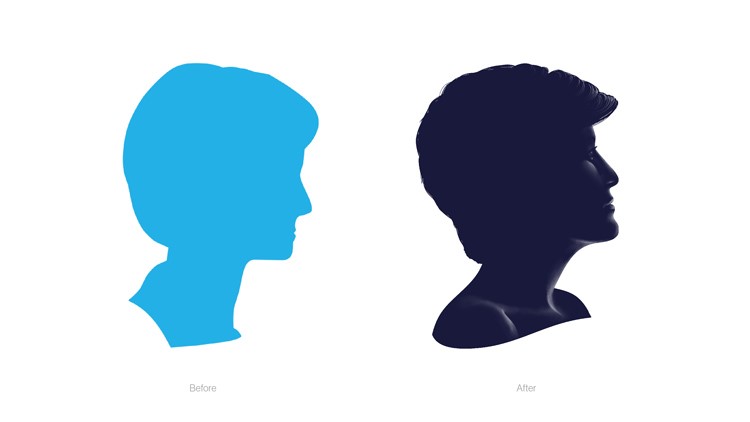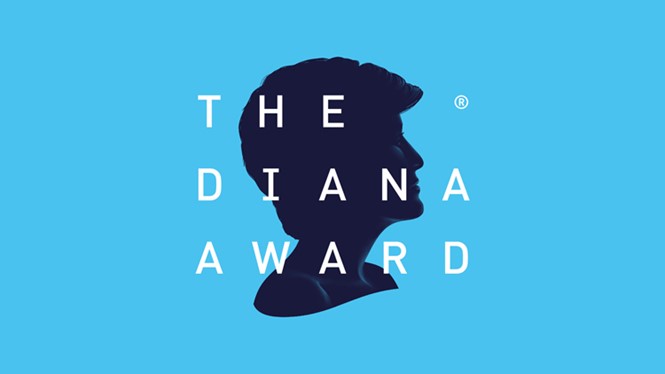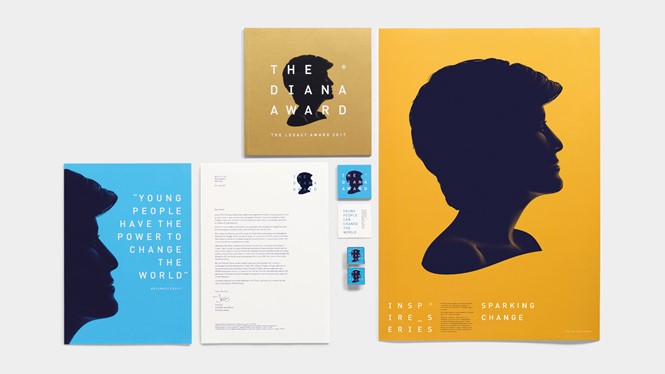Jkr rebrands the Diana Award with future-facing identity
On 31 August 1997, Princess Diana, former wife of future king Prince Charles, mother to princes William and Harry, and renowned national treasure, died in a car accident. The whole world stood still. Yet, despite the shock and mourning surrounding her death, Diana’s legacy lives on; perhaps the most notable organisation set up in her name is the Diana Award. Since 1999, the charity has worked to better the lives of young people around the UK and celebrate their contribution to society, a cause championed by Diana throughout her lifetime.
In the 20 years since Diana’s death, the Diana Award’s mentoring and anti-bullying programmes, and ‘Inspire’ series, continue the organisation’s mission to ‘inspire and recognise social action in young people.’ However, the Diana Award’s previous visual identity was perceived as slightly dated. Diana’s silhouette, which comprises its logotype, lacked clarity and did not adequately represent Diana’s desire to afford future generations an opportunity to contribute to, and learn from, society.
The Diana Award turned to London-based graphic design agency jones knowles ritchie (jkr), which led a project to update the brand and define the image of Diana, which led the brand’s identity and was its logo across most brand touchpoints. Jkr also redesigned the Diana Award trophy, as well as ensuring the charity’s previous disparate mentoring and anti-bullying arms became unified under a singular parent brand. James Nixon, UK managing director at JKR, says, “Princess Diana was undoubtedly one of the most charismatic people who ever lived, and to this day holds a special place in many people’s hearts – but the previous branding of the Diana Award didn’t quite do her justice.”
A key change carried out by jkr is the transition from a 2D, flat logo to a 3D bust of Diana. Her image also looks ahead with the head tilted slightly up – this forward-facing stance is reminiscent of the grassroots nature of the Diana Awards’ work, as well as instilling a certain optimism in the awards’ image.
Nixon continues, “Through its various programmes the charity is speaking not only to young people of different ages, but to donors, stakeholders and other organisations – so the new brand needed to be visually engaging and exciting for young people while maintaining a sense of gravitas that comes with the connection to the royal family. That was a challenge, but one we’ve been honoured to take on for such a worthy cause.”
Diana was known for her charitable work, a legacy which remains throughout the UK; for both jkr and the Diana Award, it was imperative that the award’s new visual identity reflected Princess Diana’s commitment to empowering future generations. “The Diana Award celebrates young people for their selfless contribution to society, their courage and bravery, sometimes in the face of adversity,” says Tessy Ojo, chief executive at the Diana Award.
“As soon as we learned of jkr’s reputation for reigniting organisations’ charisma we knew they’d be a perfect fit for us. We have ambitions to continue that growth in the coming years, so it felt like the right time to refresh the brand we’d first created almost two decades ago. The excellent work jkr has done gives us the opportunity to connect with more young people and more businesses around the world.”
Among Princess Diana’s most famous quotes are ‘Everyone needs to be valued, everyone has the potential to give something back,’ and ‘Young people have the power to change the world.’ Built on these foundations, the recent consolidation of the Diana Award’s image by jkr is proof that her legacy remains as strong, 20 years after her death, as it has always been.

The Diana Award logo, before/after














